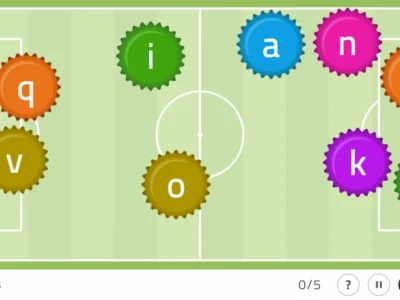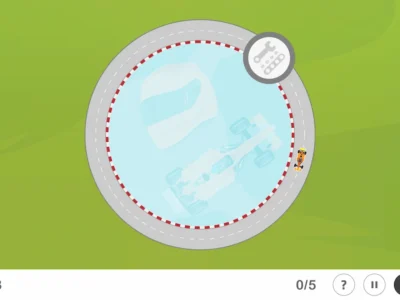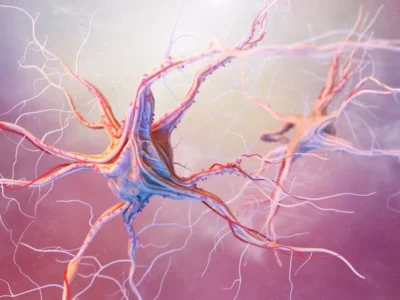Dr. in Psychology Ignacio Ayerbe Puebla speaks to us about the personality disorder. Specifically, he explains what it is, its nature, types, treatment and reality.
Our understanding of personality disorder is limited. What is it? What symptoms does it present? Why does it happen? How do you define it? How does the person who suffers face it and how does their environment face it? Why does something like this exist in humanity affecting personal and social situations of those who suffer and those who do not?
Foundations of personality disorder
In the personality disorder there is need and suffering. What does a person with a personality disorder feel and think? What image do they have of themselves and what meaning do they give to the world? To what extent do they access their own and others’ thoughts? Do they recognize their sensations and thoughts as incorrect?
Imagine a person who lives with the expectation of rejection, with a personal history of maladaptive behaviors. In a work press conference, unable to read the friendly attitude of the press conference presenter, they interpret contempt; their apparent competence shifts to an attitude of active passivity accompanied by feelings of anger and emotional pain, and finally self-invalidation.
They reject the job without finishing the press conference before being judged. Why? If we look for the functionality of this behavior, we could consider that it is a way to avoid the evaluation to which they feel subjected and with it the emotional pain they suffer. To do so, they invalidate the press conference presenter and self-exclude before the presenter can reject them.
In the short term it is a useful behavior. We can therefore try to understand the behavior of personality disorder in terms of its function, not its form.
The dilemma is therefore found between the perceived functionality of the pattern of maladaptive thoughts and behaviors and the expectations of the surrounding culture, which lead to uncertainty, placing us in cognitive inconsistency, emotional dysregulation or behavioral unpredictability from which, for psychological reasons, derives a behavior (although functional from the perspective of people with personality disorder) a behavior I say, incorrect with reference to the context in which it develops, generating in those who suffer it important limitations in their capacity to manage life, suffering and vulnerability.

Subscribe
to our
Newsletter
What is personality?
The widespread use of the term personality highlights a significant ambiguity that prevents a definition from being widely accepted.
Despite this significant diversity, definitions agree in considering in the first place both the totality of manifest behavior and private experience; in the second place the persistence and permanence of its characteristics; in the third place the uniqueness of character in each person; and lastly the usefulness of categorization to describe, explain and reliably predict behaviors based on a hypothetical construct about behavior that we call personality.
Personality models seek cause-effect relationships in physiological, psychological or sociocultural factors that move between the inherited and the learned, and determine a habitual behavior or way of being, encompassing both manifest behavior and cognitive and emotional experience.
This pattern of behavior represents an ingrained lifestyle that affects the way of interpreting reality, thinking, feeling and acting with a consistent behavior that is forged between inherited temperament and the unique character, consciously determined, acquired throughout life by experiences and social and cultural influences, the product of the integration of each person’s processes.

The value of personality
Despite the objective of describing people reliably by assigning them a definitive category, personality in its dynamic and evolving condition, presents transsituational consistency and is open to the incorporation of knowledge and opinions, disposed to rational debate and therefore susceptible to presenting different behaviors to the extent that the specific situation in which it develops changes, and innovative according to the new variables involved.
Therefore, its value transcends the private sphere to human interactions, since the integration of temperament – conceived as genetic inheritance -, the biography – or personal history of what we do and what happens to us in life -, and the character – as the learned part of behavior forged in education, family and the immediate environment -, this sum understood as personality, is the basis of a human being’s social competence (De Waele and Harre, 1976).
The route of personality
The route to achieve this social competence of mature personality, which determines people’s patterns of behavior, requires defeating automatic thoughts with the help of rational interpretation; to achieve this, rational interpretation gives meaning to feelings; these gain emotional credit and the empirical support of experience with actions; afterwards, actions train the habit by integrating knowledge, ability and desire; and finally, habit shapes the character that defines personality.
And what is mental disorder?
The second concept that needs to be explained is that of disorder. A mental disorder is characterized by a significant alteration of cognitive state, emotional regulation or manifest behavior, which reflects a dysfunction of psychological, biological or developmental processes (DSM-5). The term is used to indicate behaviors identifiable by a group of recognizable symptoms that interfere with the organism’s activity (ICD-10)
We currently do not understand mental disorders as natural classifications, since they do not exist in reality as such. The categories we use are constructs that help us understand the general laws that govern abnormal behavior for psychological reasons and guide us in treating problems of the psychopathological personality disorder.
There are therefore no diseases, there are people in whom mechanisms of construction of self-image, definition of personal and social identity, emotional interpretation, attribution of meaning to the world, problem-solving strategies, social attribution, interpersonal relationships function incorrectly; in short, there are people who require individualized psychological care.
What is personality disorder?
When people extend their particular maladaptation to several of these contexts of inner life and social life, limiting their capacity and causing their distress and that of those around them, we are facing personality disorder.
The criterion accepted by the DSM for personality disorder is a persistent pattern of internal experience and behavior that deviates from the expectations of the surrounding culture and causes significant distress and impairment in family, social and occupational functioning.
Nature of personality disorder
We are far from understanding the nature of the relationship between personality traits and personality disorder. Various models propose personality traits as a vulnerability factor for personality disorder or vice versa.
Others suggest the existence of a mutual influence with continuity derived from dependence on innate temperamental factors (Gutiérrez, 1996), the basis of the learned character that defines personality.
Dimaggio and Semerari trace personality disorder back to a cognitive or emotional deficit of metarepresentation of the self, which affects the way the person organizes emotions and the system of meanings of their inner world, their belonging to the world and relationships with others.
Etiology
As for the etiology of personality disorder, although complex and undefined, it describes among its causes:
- a) Genetic vulnerability factors due to genetic inheritance influence that acts at both the individual level and in association with abnormal environmental factors.
- b) Alteration of neurotransmitters involved in the regulation of impulses, aggression and affect, which could contribute to excessive stress responses and emotional hypersensitivity in interpersonal relationships.
- c) Neurobiological dysfunction that describes evidence of a structural and functional deficit in brain areas key to the regulation of affect, attention, self-control and executive function, and scientific evidence in relation to brain structures involved in the component of relational disturbance (Stanley and Siever, 2010).
- d) Psychosocial factors and contextual characteristics tend to be considered predisposing facilitators of personality dysfunction.
- e) Attachment processes derived from insecure or disorganized attachment relationships that suggest a failure in the development of the capacity for mentalization. (Mirapeix, Vázquez, Gómez and Artal, 2017).
Despite the certainty about the participation of these areas in the construction of the self and the construction of perceived reality, we do not have a complete understanding of the brain that connects it with the foundation of the personality.
Types of personality disorder
Personality disorders are complex to assess. It requires the detection of a broad and heterogeneous set of traits, symptoms and behaviors, an assessment of the duration and inflexibility of the symptoms and the evaluation of how these produce emotional distress and functional impairment in various areas of life. (Mirapeix, Vázquez, Gómez and Artal, 2017).
Unstable patterns of thought and maladaptive behaviors, also called incorrect or unhealthy behaviors, are framed into three groups:
Group A personality disorders
They hardly vary over the life span, characterized by a persistence of eccentric and strange thoughts and behaviors, with social situations especially problematic due to mistrust and malicious interpretation, introversion and low sociability, among which are schizoid personality disorder (distrust), schizotypal personality disorder and paranoid personality disorder.
Group B personality disorders
Tending to decline in middle age, characterized by emotionally unpredictable and extreme thoughts and behaviors, affective lability and disruptive conduct. They include borderline personality disorder, antisocial personality disorder, histrionic personality disorder and narcissistic personality disorder.
Group C personality disorders
With the presence of neuroticism, characterized by dominant thoughts and behaviors of anxiety and fear with high dependency and neuroticism and a predominant use of denial, rationalization, avoidance and inhibition such as avoidant personality disorder, dependent personality disorder and obsessive-compulsive personality disorder. Additionally there is the category of depressive personality disorder, characterized by difficulty finding pleasure, and passive-aggressive disorder, determined by intrapsychic conflicts.
Diagnosis and treatment of personality disorder
The construct of DSM and ICD typologies helps us establish a diagnosis of personality disorder which, after overcoming the resistance to evaluation of those who suffer from it, requires evaluating manifest behavior, cognition, impulse control and interpersonal relationships (there are various instruments according to DSM-4 and ICD-10 diagnostic criteria).
According to Quiroga and Erraste, there is no treatment empirically demonstrated to treat all personality disorders in general, the treatment of choice mostly accepted is psychotherapy, where there is a strategy of psychotherapeutic management specific for the different personality disorders. In behavioral and cognitive therapies important elements have been problem solving and crisis management, cognitive restructuring and skills training framed within the therapeutic alliance.
From the pharmacological point of view, the various treatments used to date have been aimed exclusively at symptomatic control. The best results have been obtained in those that reduce impulsivity in crisis situations and in those that stabilize mood.
In any case, as we have already stated there are no diseases, there are people with personality disorder who, as Millon explains, require combined modalities strategically designed sequentially, therefore, we add, personalized. Attending to the laws of human functioning that must be addressed systematically, Millon himself proposes as basic dimensions the purpose of personal existence, the mode of adaptation, the interest in survival and offspring and the personal styles for representing life experiences in the form of personal meanings.
Living with personality disorder
Facing the daily complications of personality disorder involves a permanent effort to get to know oneself and learn to manage the bad days. The person with personality disorder lives in a persistent discrepancy between private experience and what society describes as appropriate behavior. This discordance reinforces dysfunctional beliefs, assumptions and inadequate behaviors from which the motivational context of personality disorder is generated.
Anna’s experience
The suffering of the person with personality disorder is found in Anna’s testimony, diagnosed with borderline personality disorder: ” …for me it is a big problem not to have emotional stability, my sudden mood changes make people not know how to treat me and drift away… I avoid suffering by cutting off the relationship before they abandon me… society is mediocre… I would not like to be as simple as others… I begin to understand what is happening to me… Nevertheless I continue and will continue thinking that I don’t fit in this society” (Frías, A. Living with borderline disorder. pp.109-110).
The effects of this dysregulation of emotions in their signification lead to functional strategies from the perspective of the person with personality disorder, and yet maladaptive and unexpected in quality and degree in context. At the same time it interferes with maintaining the sense of self, whose purpose is to establish emotional consistency, stable ideation and behavioral predictability over time and in similar situations.
Returning to Anna’s case, we find that she presents an inability to inhibit maladaptive behaviors dependent on mood state or to initiate behaviors independent of the current mood, necessary to set long-term goals. Anna suffers.
She faces a long therapeutic path of validation and change in which understanding herself and learning psychosocial skills of thought and behavior (distress tolerance, emotion regulation, self-awareness, interpersonal effectiveness, etc.) until accepting and adapting to the normal tensions of everyday life.

The environment
The environment notes how the person suffering from personality disorder becomes a risk to themselves, to the family and to relationships. They initially tend to demand normality, an apparently simple behavioral learning that is socially taken for granted. “It’s simple, you just have to change your behavior, you can do it”…but it’s not like that, each crisis leaves us staggered, fragile like a reed fearful of the future.
The family oscillates between the understanding of maladaptive behavior allowing themselves to be manipulated by fear of reaction, and the criticism that leads to increased conflict, living in exhaustion. Uncertainty opens the way in the face of new problems, its consequences and the persistence of the behaviors. These undermine the willingness of family members to help and the tension of confrontation leads to states of anxiety and depression.
The way of relating to people with personality disorder begins with understanding: understanding that they act functionally according to their particular way of seeing the world, they act as they know; understanding that their goal is not to hurt, that the conflict is not personal, that its function is to reinforce the behavior; understanding the suffering of maladaptive behavior; understanding that they face a long therapeutic path of self-knowledge and learning of normalized psychosocial skills.
Assimilating this philosophy is important because it determines the attitude of helping change, which is an essential component of the relationship of relatives with those who suffer from personality disorder.
Bibliography
- Ayerbe, I. (2018). Mental Atlas. Ed. Punto Rojo, Sevilla.
- Dimaggio, G. and Semerari, A., (2008). Personality Disorders. Psychology Library, Desclée de Brouwer, Bilbao.
- Marsha, L., (2007). Treatment Manual for Borderline Personality Disorders. Paidos, Barcelona.
- Mirapeix, C., Vázquez, J., Gómez, A., and Artal, J., (2017). Integrative Approach to Borderline Personality Disorder. Psychiatry Service of the Marqués de Valdecilla University Hospital and CIBERSAM, Santander.
- Navas, E. et al. PIR Clinical Psychology Manual. CEDE, Madrid.
- Frías, A. (2018) Living with BPD. Desclée de Brouwer, Bilbao.
- Jarne, A. and Talarn, A.(2016). Clinical Psychopathology Manual. Ed. digital Titivillus
- Flores, T, Lavilla, M., Molina, D., López, B.(2017). Learning to Ride a Bicycle Again. Morales i Torres
If you liked this post about personality disorder, we recommend you take a look at these NeuronUP publications:
“This article has been translated. Link to the original article in Spanish:”
Trastorno de personalidad: qué es, naturaleza, tipos, tratamiento y realidad







 Cognitive stimulation session for people with cognitive impairment
Cognitive stimulation session for people with cognitive impairment
Leave a Reply